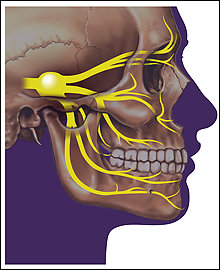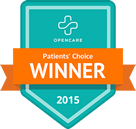 Written By: Joe Pawlikowski
Written By: Joe Pawlikowski
Mixed messages run amok in the fitness world. Some experts say one thing, while others flatly say the opposite. Oftentimes experts argue directly with one another, yet rarely do they come to a definitive conclusion. Making matters more complicated, it’s easy for both sides to find evidence for their claims. Typically you can find a study that argues from nearly every angle.
(Seriously, just go to PubMed and dig around a little bit. You’ll find a study supporting nearly anything you want to say.)
Perhaps no aspect of fitness involves as much contentiousness as supplements. If you pick up a typical fitness magazine, you might think them essential to training. If you read a natural training forum, you might think them poisons at best, immoral implements at worst. There are arguments from one extreme to the other, but as in most cases the truth lies in the middle.
People constantly ask me whether they should try this supplement or that. Here is the advice I dispense to them.Some experts say one thing, while others flatly say the opposite.
Can you afford it?
The No. 1, unbreakable rule with supplements is that you must not break the bank to buy them. Going into debt just to purchase a fitness supplement is the height of absurdity. It might indeed enhance your workout and bring you closer to your goals more rapidly, but is that really worth the agony of debt?
Remember, when you go into debt you pay far more for the items you purchase. Perhaps you’re buying a $40 bottle of creatine, but if you buy it on credit and don’t pay it off immediately, that $40 turns into $45, turns into $50, and so on. Going into debt is generally a bad idea, but when it comes to supplements — and that is a loaded, heavy word for a reason — going into debt makes less than zero sense.
Going even further, I’d submit that unless you are completely flush with disposable income, you should eschew supplements. There are just better ways to spend your money. Don’t know if you’re totally flush? Start using an accounting program such as QuickBooks from Intuit. For starters, it’s a far better investment than supplements. It will also let you know when you have sufficient disposable income to start spending on supplements.
If you don’t have sufficient disposable income, you can stop reading right now. The answer is no, you almost certainly should not buy supplements other than maybe protein powder.
Is the brand reputable?
The first criteria is quite easy. As explained, it’s rather easy to determine whether you can afford to start purchasing workout supplements. If you’re unsure, chances are the answer is no. But once you determine that you can afford then, you start to get into some murky waters. The first pond you’ll encounter is that of brand. Is the brand of supplement you want to try reputable?
There are many ways to determine this, though it requires thorough research. You’ll need to start reading up on the supplement maker, both through user reviews of the supplement and through third-party, non-sponsored forums. I’m a big fan of using Bodybuilding.com for this purpose, since it has user reviews (hosted not on BB’s main site) and forums. They’re not the only one I check, but it’s a good starting point.
Beware, though: there are forums that deal with some shady supplements. Some of them sell their own lines of supplements, going so far as to commission studies that demonstrate their effectiveness. Of course, when you commission a study chances are it will turn out in your favor. It can be difficult to cut through this gray area, but the more vigilant you are in your research the more clearly you will understand which brands are reputable and which brands are selling you snake oil.
Prepare to waste money
Even reputable brands put out ineffective products from time to time. Sometimes that’s because they cut corners. Other times it means that while the supplement might work for some people, it is ineffective for others. The net result is that you are bound to buy a supplement at some point or another that does nothing for you. It is, unfortunately, the cost of doing business.
This is another reason why having sufficient disposable income is absolutely necessary if you want to start buying supplements. Some day, perhaps the very first time you experiment, you will buy a tub of something that has absolutely no effect on you. It will cause massive frustration, to have flushed $50 down the drain. But you’ll never know until you try.
Experiment in moderation
To repeat the point above, buying supplements is all about experimentation. You have to try many different things to see what works for you. The key to success is moderation. If you go all out and try six different supplements at once, you might not know which ones are taking effect. You won’t know what is interacting with what. Worst of all, you don’t know what ill effects you’re creating within your body.
The best way to approach supplementation is to go one supplement at a time. Try one thing. If it works, add another to see if they work together. If they don’t, try using the second without the first. What changed? If you want to add a third, try it in conjunction with the most effective of the first two (A, B, or A+B). This is the only way you can gauge with any accuracy what works for you and what does not.
Also understand that many supplements have adverse short-term effects that wear off after time. This is both in the positive and negative category. One supplement might give you a great after-workout pump for a few weeks, but the effect could wear off. In the same way, a supplement might force you to sit on the toilet for much of the day, with that effect going away with regular use.
All across the internet you’ll see articles asking if supplements work or are a bunch of hooey. Each article will come up with a different answer, as though we can lump all supplements in the same bin and either embrace or dismiss them wholesale. The truth is that supplementation can enhance your workouts and help you reach your goals more rapidly and efficiently. The specific supplements you use will depend on your personal situation, from finances through body tolerance. Find the right balance, and you should go ahead and experiment — so long as you do so in moderation.
 recently completed my series of IMS/Dry Needling treatments and am moving forward in my life; now being a true “believer” of this therapy.
recently completed my series of IMS/Dry Needling treatments and am moving forward in my life; now being a true “believer” of this therapy.



